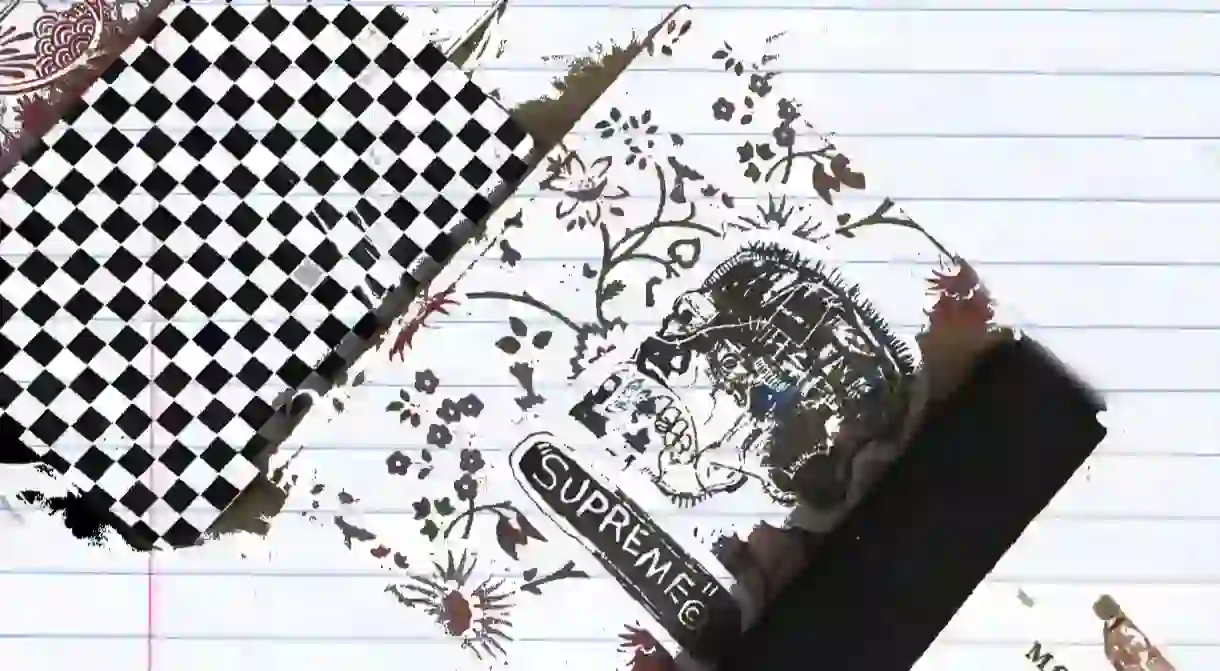Dressing Down Depression With a Clothing Diary

What is a clothing diary, and how can noting rituals about getting dressed help manage your depression?
In the winter of a particularly bleak depression, I kept a journal. The process of writing down feelings was too much, but I felt so lousy I had to write something just to keep my fingers moving. Mornings were the worst. I’d wake, tongue in throat, gasping at the prospect of putting together an outfit that my students—at the Fashion Institute of Technology, no less—would scrutinize head-to-toe. I couldn’t let them (or the rest of the world) see the blistered, slashed-up monster I was inside.
Daily, for seven months, I wrote down what I wore. I tallied the minutes it took me to get dressed, how many days I could go without showering, if I wore make-up— and if so, what style.

There were rare entries when I actually enjoyed getting ready, a hallmark of the joie de vivre that seemed as faraway as disco.

My clothing diary had spurts of cultural inquiry: Questions like, “Why do we dress up the dead?” appeared on pages but went unanswered. Here and there, a joke appeared—a crack about leg warmers, or how crazy in love you have to be to wear fuck-me-pumps on a New York City subway. But really, my clothing diary was proof of life. It meant I had been in the world; I’d participated. Been seen. Sometimes, in order to figure out who you are and where you’re going, you have to put on a costume.

Ultimately, the diary itself yielded no epiphanies. I already worshipped the jegging, knew the transformative power of a red lip, and appreciated all accessories that helped me hide in plain sight (hat, sunglasses, pashmina). Like C.S. Lewis’ Lucy, the heroine of my favorite childhood adventure, I was lucky enough to have a wardrobe. Living in the garden apartment of a brownstone, my wardrobe was actually a walk-in closet. Even without Narnia on the other side, my closet still served as my magical source of transformation. I could be a girl who wore overalls and a Yankee’s cap, a lavender dress to her First Communion, a strapless body-con number to a junior high dance. I could be a woman with too many party dresses—no wedding dress hanging amongst them—a woman who piled the black thongs of her dead friend, which get worn on occasion. Suffice to say, a woman’s wardrobe serves as a rich narrative device for her life. Closets can be time tunnels webbed with the stories of our pasts.

Of course, just as a woman is more than a sum of her parts, she isn’t singularly defined by her wardrobe—and by that I don’t just mean her closet, but the clothing inside. But there’s no reason to pit style and substance against each other either. In a sociology class at Barnard, I remember one of my favorite professors—one who had published several books and lectured to classes of three hundred students at Columbia—giving a talk about “passing” in and out of states of beauty at will. She explained what power, as a woman, that gave her. That talk stuck with me for years, for I, too, take pride in my ability to dress down or clean up. Beyond my narcissistic musings, this idea of people transitioning into different stages of femininity on purpose could not be more culturally relevant.
Yet there’s still this funky idea that when a woman purposely invests in her appearance she’s somehow vain, anxious, shallow, and simply not as smart as another kind of woman—one who knows the secrets to invisible make-up, or is somehow bucking the system by subverting femininity with a countercultural look.
I just don’t buy that. May the wings of your eyeliner always be even. May the hands of your tailor be able. May you spend within your means and never second-guess your love of gem-encrusted turbans. All around you are images of women you’re supposed to admire for how they dress, what they do to mask their physical insecurities, how flawless they can look in a photograph.
The idea that clothing is imbued with sentimental value, be it joy or melancholy, is not new. But what did the clothing diary do for my depression?

This journal of costume changes was evidence that even in my darkest hour I had still existed. Rituals mark and manage events. Rituals contain the uncontainable. I knew those pages would be a record I could reflect upon once I caterpillar-ed my way out of this depression. And I did. It so seems, the clothing diary held a key to my resilience. So take away from that what you will: all types of clothing carry historical intrigue that goes beyond the personal, beyond the political, and hold the potential to reach toward the sublime.













